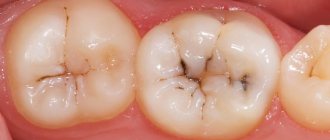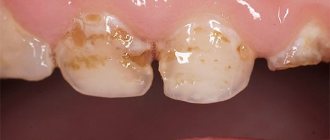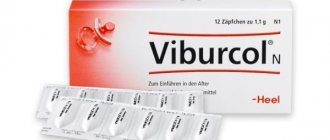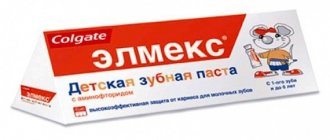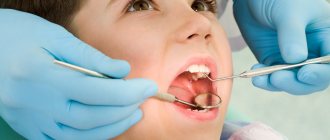Why does caries occur in childhood?
It is known that caries is a pathological process that occurs in the hard tissues of teeth under the influence of internal and external factors. Carious lesions arise as a result of the “work” of cariogenic bacteria living in the oral cavity.
In this article
- Why does caries occur in childhood?
- Features of caries of milk teeth
- Symptoms of carious lesions in baby teeth
- Why is caries treated for young children?
- How is caries treated in children?
- Methods for treating childhood caries without drilling
- Invasive treatment of caries
- Do they give anesthesia to children?
- Prevention of childhood caries of primary teeth
By processing carbohydrates that enter the mouth with food, these bacteria produce acid. It is this that contributes to the destruction of enamel, dentin and other tooth tissues. Several factors contribute to the proliferation and active activity of cariogenic bacteria, which ultimately leads to the development of caries in children.
- Improper dental hygiene.
Insufficient cleaning from plaque, infrequent cleaning.
- Eating high in carbohydrates.
Children who eat a lot of sweets and flour, drink sweet compotes at night, and snack on chocolates are more susceptible to developing caries. A favorable breeding ground for microbes is formed in their mouth.
- Reduced immunity.
Weakened immune defense does not allow the body to effectively resist negative influences, so children with weak immunity develop caries more often.
- Features of intrauterine development.
The formation of teeth occurs in the first trimester of pregnancy, and it can be affected by the lifestyle, health, and previous diseases of the expectant mother.
These factors contribute to the fact that tooth enamel begins to lose mineral substances, cariogenic microbes multiply in the mouth, and as a result, dental caries develops.
Types of caries in a child
There are 4 types of caries in children.
- Approximal (contact) caries. Develops simultaneously on both antagonist teeth;
- Cervical caries. Present at the point of contact of the coronal part with the soft tissues;
- Circular caries. Covers the entire gum line area;
- Fissure caries. It affects dentin at the locations of grooves on the chewing surface.
Based on the type of disease progression, children are diagnosed with compensated, slowly developing caries, and uncompensated caries with a rapid rate of damage to dentin.
Features of caries of milk teeth
Saliva at an early age does not have sufficient antiseptic properties, and microbes easily multiply in the oral cavity. At the same time, the degree of enamel mineralization in baby teeth is less than in permanent teeth. In this regard, childhood caries spreads very quickly. If in an adult a carious lesion on permanent teeth can develop from an early stage to a deep one over several years, then in children the same process takes only a few months.
In a child, dental caries often affects several teeth at once. Only children have such types of caries as ring-shaped and planar. The condition of the dental system is also affected by various infectious diseases to which children are susceptible.
Symptoms of carious lesions in baby teeth
The manifestations of caries depend on what stage the process is at.
For early caries (the so-called stain stage), a characteristic sign is a light spot or thin line on the surface of the tooth enamel. This is an area of demineralization - the focus of carious lesions. At this stage, it is difficult to notice caries without the help of a dentist, because the child does not show anxiety or complain of pain or discomfort.
When the process enters the superficial stage, a dark pigmented spot forms on the tooth enamel, which has a rough structure. The tooth may react to sweets, and during the examination the doctor discovers areas of softening of the enamel.
At the next stage of middle caries, dentin is damaged - the bone tissue of the tooth, in which a cavity is formed. The lesion looks like a darkened area, food gets stuck in the hole, and the child complains of pain when eating cold or hot food.
At the stage of deep caries, it is painful for the child to chew, the tooth reacts to any irritants, it can hurt on its own, and partial or complete destruction of the crown occurs. A characteristic type of childhood caries is the bottle form. It affects the dental neck and occurs in infants who often feed from a bottle for a long time. Depending on the form, stage of the disease, and the age of the child, the dentist will decide how to treat teeth affected by caries.
Stages of caries development and their symptoms
Dental caries in children can have four stages of development.
The first is initial caries , in which minor changes occur in the structure of the hard tissues of the teeth. This stage is characterized by the appearance of small spots of white or yellow color on the enamel or its darkening.
The second is superficial caries . At this stage, the structure of the enamel undergoes significant changes. They manifest themselves in the form of roughness of the tooth surface, changes in the color of spots from white to brown or black. In addition, the child begins to feel discomfort when eating sweets or sour fruits.
The third is medium caries , in which the formation of black cavities in hard tissues is observed. At this stage, a painful reaction to hot or cold food appears. Additionally, leftover food can get stuck in the cavities.
The fourth is deep caries , in which the destruction of hard surfaces reaches the pulp. This stage is characterized by constant and severe pain when eating food. In addition, the child may develop a fever, nausea, or weakness.
Why is caries treated for young children?
There is a myth that baby teeth with caries do not need to be treated, as they will fall out anyway. In fact, dentists unanimously say that treatment of childhood caries at any age, both on milk and permanent teeth, is mandatory.
There are several reasons why caries of baby teeth should be treated before the age of 5-6:
- The baby tooth preserves space for the permanent tooth and stimulates its growth.
- It takes part in the chewing function and, therefore, in the digestion process.
- Baby teeth affected by caries are a source of chronic infection in the child’s body. In addition, the root of the baby tooth is located next to the germ of the permanent tooth. If caries in children is not treated, the inflammatory process can affect permanent teeth even before they erupt.
- Healthy baby teeth are necessary for a child to develop high-quality speech skills and correct pronunciation of sounds.
- If parents do not treat their child's caries, this can lead to untimely loss of baby teeth. Because of this, other teeth in the row shift, permanent teeth begin to cut in the wrong place, which leads to malocclusion.
- Early loss of a baby tooth can delay the eruption of a permanent one.
This is why it is so important to preserve baby teeth until they fall out naturally. And this can only be done if baby teeth are treated properly in a timely manner.
Is there a connection between tooth decay and breastfeeding?
So-called “bottle” caries develops in children from zero to four years of age and destroys baby teeth after they have erupted for a certain period of time. Most often, bottle caries develops on the front teeth in the cervical region with partial or complete coverage of the crown around the circumference - in this case it is also called circular caries.
It’s also useful to read: Why you might dream about teeth affected by caries: let’s turn to dream books
It is also often possible to observe white or black spots in the gum area, extending to the boundaries of the spaces between the teeth. Sometimes the crown of a baby tooth is completely covered by circular caries - in such a situation, the entire crown part can easily break off.
Photos of baby teeth with circular caries:
Breastfeeding does not directly cause bottle tooth decay. According to experts, only frequent and prolonged night feeding without hygiene procedures after it can provoke and accelerate the formation of caries on baby teeth.
It doesn’t matter at all what they feed: breastfeeding or bottle-feeding, milk or juice. The main thing for the onset of plaque formation on baby teeth and the cariogenic activity of microbes is frequent feeding of the child, especially during sleep, feeding with sweets between main meals, as well as the lack of hygiene measures after meals.
An attempt not to treat circular caries of primary teeth can result in serious multiple crown defects, even chipping and breaking off. This is often accompanied by pain when eating or even spontaneous acute pain. Loss of function of a large number of teeth entails problems with bite, chewing, digestion, and general well-being of the child.
On a note
To treat bottle (circular) caries of primary teeth, medicinal fluoride-containing preparations are used, which can be applied both in the clinic and at home, if you follow the doctor’s instructions. Laser treatment of caries and ozone treatment at an early age are not used. In order to prevent childhood caries of baby teeth, dentists recommend brushing the baby’s teeth after every meal, and parents of small children should follow the stages of processing and sterilization of pacifiers and bottles.
How is caries treated in children?
What to do if a child has caries? Parents often ask dentists this question. And the answer is to treat. It is not so important when a child develops caries, whether he is one year old, 5 years old or 12 years old; dental disease is treated at any age. The only difference is how exactly dental caries are treated.
Different treatment methods are divided into two main groups - conservative and surgical. Conservative ones allow you to quickly and painlessly stop the carious process without drilling the tooth. Such techniques are most suitable for children, but they are effective only in the early stages of caries.
Surgical treatment involves drilling the carious cavity with a drill, removing the affected tissue and installing a filling. In case of deep or moderate caries, it will not be possible to cure a tooth without preparation.
Sweets are the cause of tooth decay
Indeed, it is fast carbohydrates that cause caries, disrupting dental health.
But they are not the only danger.
When you overuse sweets, a dense, sticky film forms on the surface of your teeth, which is a breeding ground for bacteria to multiply. This film is difficult to wash off with saliva, making it easier for bacteria to parasitize.
Nutrition is generally a factor of aggression, and one of the causes of caries.
In addition, dentists and doctors say that there are harmless sweets that are safe for the teeth and oral cavity. Therefore, the statement is 100% false.
Video: Where does caries come from?
Methods for treating childhood caries without drilling
A child has been diagnosed with a carious spot, that is, initial caries - what to do in such a situation. The doctor may offer several options.
- Fluoridation.
A special composition with a high concentration of fluoride is applied to the surface of the tooth enamel. The mineral substance helps strengthen the enamel, restore its structure, and helps stop the further process of tissue destruction.
- Remineralizing therapy.
The teeth are coated with compounds containing phosphorus, calcium, magnesium and other minerals. The treatment promotes the remineralization of enamel, restoring its strength and structural characteristics.
- Ozone therapy.
Another modern non-invasive method in which children's teeth are treated with ozone. It destroys different types of cariogenic bacteria, preventing their proliferation in the oral cavity.
- Silvering.
Previously, this method was very popular, today it is used less frequently due to the fact that it affects the aesthetics of the teeth. After silvering, white baby teeth acquire a distinct dark color. The essence of the method is that tooth enamel is coated with compounds containing silver. They have an antiseptic and bactericidal effect, forming a protective film on the surface that prevents the spread of infection. Silvering does not cure caries, but it helps slow down the process of tooth decay.
Possibilities of modern treatment
Modern pediatric dentistry has various methods for treating caries in children, even at a very early age. Moreover, such treatment approaches are selected that are highly reliable, safe and least traumatic for the baby’s psyche.
The main methods of treating early caries of primary teeth are non-invasive or minimally invasive technologies:
- remineralization of enamel and dentin (restoration of lost mineral structure);
- deep fluoridation;
- manual treatment of a carious cavity without the use of a drill;
- delayed filling;
and etc.
The latest development, the ICON technology, is in especially great demand in the treatment of caries of primary teeth in the stain stage. In this case, long courses of treatment with remineralizing compounds and fluoride preparations are not required, since one visit is almost always enough for the carious stain to disappear from the surface of the tooth.
The meaning of the procedure is that after cleaning the enamel from plaque, a gel with a weak acid is applied to the carious stain, which removes the surface layer of enamel, and then a highly fluid polymer material, cured by the light of a special lamp, is introduced into the site of the carious lesion. At the same time, the polymer resin fills the pores of the enamel and hardens in them, creating a new strong and reliable structure.
This is interesting
Treatment using ICON technology is somewhat reminiscent of filling a tooth, only without the use of standard equipment. This technology is actively used in orthodontic treatment after removal of braces, as well as in the treatment of caries in the stain stage located on the vestibular (external) and contact surfaces, that is, in the spaces between the teeth. ICON technology is suitable for the treatment of early caries of primary teeth in children over 3 years old.
If ICON technology is used to treat initial caries when there is no cavity yet, then what if the destruction of a baby tooth has already crossed the boundaries of the enamel and reached the dentin? If a child has an increased fear of traditional treatment methods based on preparing a carious cavity with a drill, then the ART method (atraumatic restorative treatment) is used.
The photo below shows some of the tools used when using the ART method for treating caries - in fact, they replace a drill:
The meaning of the technique is simple: special sets of hand excavators and some other instruments are used, with which the carious cavity is cleaned of softened and infected tissues, after which it is medicinally treated with weak antiseptic solutions and filled with glass ionomer cements - materials that can saturate the tooth tissues with fluorides for a long time.
Despite the significant drawback of the technique, which is that pigmented (dark) uncleaned dentin often remains on the bottom and walls of the cavity, it is still possible to stop the progression of the process of destruction of a baby tooth due to caries, fill the defect and return the tooth to normal chewing processes , as well as eliminate pain symptoms from external irritants. And if this technology is not always suitable for permanent teeth, then for the treatment of carious lesions in temporary teeth it is sometimes the most successful option, so as not to traumatize the baby’s psyche.
Invasive treatment of caries
If there is a hole in a tooth, it is treated as if it were permanent, using an invasive method. First, using a drill, the dentist prepares the carious cavity and removes softened, pigmented tissue. Rinses, dries and disinfects the tooth.
After sanitation, a filling is placed inside the cleaned cavity. Today, light-curing filling composites are the most popular. They are applied in layers, and at each stage they are illuminated with a special lamp for curing. Light-curing fillings have good strength, long service life and do not shrink, which reduces the risk of developing recurrent caries under the filling.
After installing the filling, the doctor adjusts it to the bite, grinds and polishes it, giving it the correct anatomical contours.
Teeth should be brushed immediately after eating
Also one of the common misconceptions.
Of course, dentists say that ideally you should brush your teeth after every meal, but they emphasize time.
If you brush your teeth immediately after eating, there is a high probability of harm. After all, it has been proven that during active chewing, the enamel is erased by 4 microns.
You need to brush your teeth after eating 15-20 minutes, but not earlier. Such measures allow you to remove all aggressive factors from the oral cavity - and protect yourself from caries.
Do they give anesthesia to children?
Many parents are concerned about how to painlessly treat teeth in children under 5 years old.
Non-invasive methods are absolutely painless. If a cavity needs to be prepared, anesthesia may be required. Children most often undergo two-stage anesthesia. First, the gum area is treated with an anesthetic gel, which numbs the injection site, and then an anesthetic injection is given.
In some cases, it is advisable to use sedation - when the child is introduced into a relaxed state of half-asleep using a special gas. Choosing the optimal method of pain relief and treatment is the responsibility of the dentist.
Prevention of childhood caries of primary teeth
Caries of primary teeth can be prevented if you listen to the recommendations of dentists and follow preventive measures for this dental disease.
- Take care of your oral cavity from the moment the first tooth appears.
Previously, it was believed that young children needed to brush their teeth from about one year old, when they grew eight front incisors. Modern dentistry has revised this approach, and today it is recommended to brush children’s teeth as soon as the first baby tooth has erupted. This usually occurs between 6-9 months of age. It is clear that a baby cannot take care of the oral cavity on his own, so this task falls on the shoulders of the parents. The first teeth are cleaned with special fingertips or a baby brush without toothpaste. The brush should have a small cleaning head and ultra-soft bristles. As they approach the age of one year, they begin to brush their teeth with fluoride-free toothpaste. As the child gets older, the size of the head and the stiffness of the bristles may change. For example, for a child aged 5 years, you can purchase a toothbrush with medium-hard bristles.
- Follow the rules for brushing your teeth.
A child may develop caries even with regular brushing if this process is left to chance. Children under about 7 years old cannot brush their teeth properly, so parents should help them and monitor the process. Proper oral care involves brushing your teeth twice - in the morning after breakfast and in the evening before bed. The hygiene procedure should not take less than 2-3 minutes. It is important to ensure that the child thoroughly cleans each tooth on both sides and cleans the chewing surfaces. A large number of bacteria accumulate on the tongue and the inside of the cheeks, so at the end of cleaning you need to teach your child to remove plaque from these surfaces.
- Routine visit to the dentist.
Few children like to treat tooth decay. Modern methods make it possible to do this quickly, painlessly and without drilling, but only if the disease is detected at an early stage. This is why it is so important to take your child to the dentist twice a year, even if the child has no complaints. The doctor will check the condition of your teeth and give recommendations for care. Regular visits accustom your child to visiting the dentist and help get rid of fear. In the future, such children sit in the dental chair without any problems and have their teeth treated.
Follow these preventive measures and you may not have to treat your child’s caries.
Where to go for treatment
When caries occurs in baby teeth or its complications, unprepared parents always face a problem: where to take their child for dental treatment? Often, “adult” dentists conduct mixed consultations, that is, they also treat children.
However, pediatric dentistry differs significantly from “adult” dentistry, so you should choose specially equipped pediatric dental institutions. The choice between a public and private institution depends on the financial component. It should be borne in mind that any savings on the child’s health often make themselves felt in the future.
Of course, not all public institutions with free admission will have poor quality treatment, but the frequent uneven distribution of small patients among several pediatric doctors seeing in a large hospital or clinic leads to various paradoxes. Professional doctors who are ready to qualitatively help a child are forced to serve from 15 to 25-30 or even more children a day, but not entirely conscientious and incompetent doctors often have a lot of free time, but no one wants to bring a child to them.
You need to understand that in both cases you may not receive quality and guaranteed assistance. Moreover, in conditionally “free” institutions they most often use outdated methods and approaches to caries treatment, “ancient” equipment and far from the most modern materials.
A large flow of patients excludes an individual approach, which cannot be said about private clinics and centers, where an individual prevention and treatment plan is drawn up not for one day (as most often in government institutions), but for years to come. The clinic’s task in this case is mutually beneficial cooperation with parents in order to preserve the child’s baby teeth until their physiological change, taking into account the age and psychological status of the baby. At the same time, experienced pediatric dentists establish a form of interaction in the form of a game.
From a dentist's observations
One of the most effective ways in modern private dental clinics to arouse a child’s interest in treatment is through colored fillings placed on baby teeth to treat caries. Popular sets of colored fillings from the German company Twinky Star allow the child to choose the color of the future filling. The set includes 7 colors: blue, orange, pink, yellow, green, etc. As a rule, the child’s strongest motivation in this case is to show off his new beautiful filling to his peers.
It is also useful to read: What caries on teeth can look like: photographs
